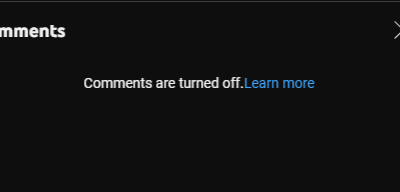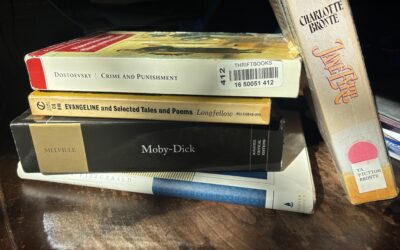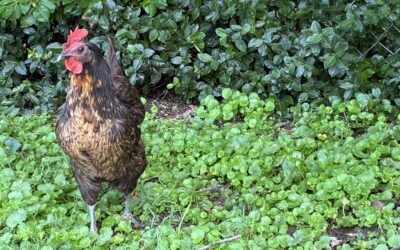Matthew 13: 24-30
Another parable he put before them, saying, “The kingdom of heaven may be compared to a man who sowed good seed in his field; but while men were sleeping, his enemy came and sowed weeds among the wheat, and went away. So when the plants came up and bore grain, then the weeds appeared also. And the servants of the householder came and said to him, ‘Sir, did you not sow good seed in your field? How then has it weeds?’ He said to them, “An enemy has done this.’ The servants said to him, ‘Then do you want us to go and gather them?’ But he said, ‘No; lest in gathering the weeds you root up the wheat along with them. Let both grow together until the harvest; and at harvest time I will tell the reapers, Gather the weeds first and bind them in bundles to be burned, but gather the wheat into my barn.’”
Completely Non-Expert Interpretation (following the Jesus explanation which is totally expert):
Jesus explains another one:
(By the way: The weed Jesus is talking of is possibly darnel, a slightly poisonous plant resembling wheat in the early stages of growth. Only when it fully matures can it be differentiated from wheat.)
Matthew 13: 36-43
Then he left the crowds and went into the house. And his disciples came to him, saying, “Explain to us the parable of the weeds of the field.” He answered, “He who sows the good seed is the Son of man; the field is the world, and the good seed means the sons of the kingdom; the weeds are the sons of the evil one, and the enemy who sowed them is the devil; the harvest is the close of the age, and the reapers are angels. Just as the weeds are gathered and burned with fire, so will it be at the close of the age. The Son of man will send his angels, and they will gather out of his kingdom all causes of sin and all evildoers, and throw them into the furnace of fire, where there will be weeping and gnashing of teeth. Then the righteous will shine like the sun in the kingdom of their Father. He who has ears, let him hear.
Another way one to approach this (if I may be so bold Jesus) is by thinking of parasitic brooders.
The beautiful, sweet, industrious birds at the backyard feeder work hard in the spring to build strong, warm and comfortable nests in which to lay their eggs and raise their young. Then along comes the brown headed cowbird, in the middle of the night, laying an egg in the more industrious birds’ nests. The more industrious birds will warm, feed and do all the hard work of raising the cowbird offspring, sometimes at the expense of their own babies in that the cowbird babies hatch faster and are bigger and will, therefore, demand more food from their exhausted foster parents.
“I’m starting to suspect that kid isn’t ours,” the father cardinal said.
“What makes you say that?” asked the mother cardinal, feeding the chick in question some seed she’d collected.
“He’s huge, he doesn’t look like the others and Mrs. Cowbird is no longer pregnant, yet her nest is suspiciously void of eggs or chicks. In fact, Blue Jay said he dropped by to tell them about a suspicious bird in the neighborhood possibly laying eggs in other birds’ nests and he saw that the cowbird nest had recently been outfitted with a new flat-screen television.”
“So what are you saying?”
“I think the cowbirds, whom I would consider an enemy after they never returned our ladder, have planted their eggs next to the eggs of all the other birds in the neighborhood. And since we’re all kind of dumb, we can’t really tell the difference between the stranger’s offspring and our own.”
“What a nefarious plot! Shall we call together the neighborhood association of songbirds and route out the imposter chicks from all of our nests?” the mother cardinal asked.
“I’m not sure if that’s such a great idea,” the father cardinal said. “As I mentioned before, we’re all kind of dumb and may throw out one of our own chicks instead of the offending one. Best to let the chicks grow up together side by side at which point we will throw the enemy’s offspring out of our nests with extreme prejudice.”
“But won’t they be able to fly at that point?” the mother cardinal asked.
“I didn’t say my plan would be perfect,” the father cardinal said. “I’m working with what I’ve got here which is only about 2 grams of brain.”
“I guess that’s why we should leave the parable writing to Jesus,” the mother cardinal said as she absentmindedly fed the remainder of her seed to the cowbird chick instead of the cardinal chicks who were too small to muscle their foster brother out of the way to get their fair share of food.
So be it weeds or wheat or the less than perfect re-imagining with the songbirds and parasitic brooders, this parable teaches that there will be a final separation of good and evil at the Last Judgement. In the meantime, we have to live with the fact that there will be both the sincere faithful and frauds side by side in the church. It’s frustrating because sometimes it seems like the frauds are more visible like the giant chicks or the weeds (anyone who has ever had a garden knows that weeds draw the eye no matter how giant and colorful the cultivars). However, we must be patient and steadfast and not be frauds till the end when Jesus sends out the reaper to harvest his faithful and to throw the charlatans into the fire to gnash their teeth*.
*Bible talk for “I can’t even.”





0 Comments